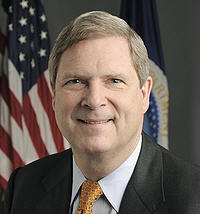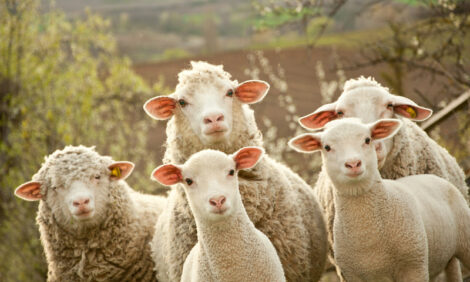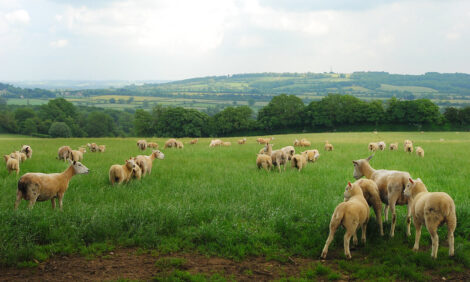



Op-Ed: Good biosecurity is the key to mitigating the spread of H5N1
Improved biosecurity indicated to limit the spread of H5N1
Editor's note: The following is an Op-ed by the US Secretary of Agriculture Tom Vilsack.
The more we learn about H5N1, the more we understand that good biosecurity is a critically important path to containing the virus. Containing, and eliminating, the virus in our dairy cattle is essential – to protect the health of our herds and flocks, our farmers, our farmworkers, our families, and the rural economy they make possible.
This past winter a group of migrating wild birds infected with H5N1 transferred the virus to dairy cattle somewhere in the Texas panhandle region – this was the first reported case in dairy cattle. Cows that were shipped from the panhandle spread the disease to other parts of the country and now, H5N1 – the same strain of Highly Pathogenic Avian Influenza found in wild birds and poultry flocks – has been found in 115 dairy herds in 12 states.
H5N1 is highly pathogenic in birds, meaning birds that get the virus get very sick, very quickly, and almost always die as a result. This virus has been at the top of the list for risk of global pandemics for years as it has circulated among birds and other species. USDA has been working with poultry and egg producers for a decade to manage the virus and it is a disease that our scientists understand well. For poultry farmers, depopulating affected flocks, disinfecting their poultry houses, barns, and equipment, and improving their biosecurity practices has helped control the spread of the disease while keeping people safe. Sadly, migrating birds bring H5N1 with them so there will likely always be a threat of the disease for our poultry farmers.
H5N1 behaves very differently in cattle. Dairy cows that get H5N1 often have a sudden drop in milk production, go off feed, and generally do not feel well. But unlike birds, sick cows do not typically die from the virus and typically recover after a few weeks and return to full milk production. Thus, USDA is making different recommendations to dairy farmers to help them test for and manage the disease in dairy cattle. These recommendations were designed with input from experts, including, dairy producers, veterinarians, state officials, and USDA researchers.
Data show that the movement of cows shipped from the Texas panhandle region was initially responsible for the spread of H5N1 to different states. So, USDA put in place a Federal Order – a type of temporary requirement – that directs all dairy farmers to test their lactating cows before moving them across state lines. The Federal Order has led to more producers testing their cows, most specifically for pre-movement to raise assurances, which has the added benefit of providing information so producers and veterinarians can take quick action to limit the impact of the disease and to help us better understand its spread. As producers do more testing, we expect to continue to detect additional dairy herds infected with the virus. This is what USDA expected and is an indication that the system is working as designed.
As producers, USDA scientists, and veterinarians looked carefully at H5N1, including through detailed epidemiological analysis, we learned that the H5N1 virus concentrates in the udder of sick cows and in the cow’s milk, which can contain high loads of the virus. That means even just a small splash of milk can spread the disease. We also came to understand that the disease likely spread between dairies in a community through normal business operations such as the movement of people – unintentionally on items like clothing or shoes – vehicles, and equipment coming and going on a farm.
These findings indicate that improved biosecurity is the key to limiting the spread of H5N1 to keep animals, workers, and farm operations safe. Biosecurity is a set of practices that can help to limit or prevent the spread of virus or disease among animals, as well as people, plants, and more. In this instance, enhanced biosecurity can include practices such as thoroughly cleaning and disinfecting parlors, equipment, clothing, and vehicles; separating sick cows and limiting movement of cattle; wearing and disinfecting personal protective equipment; and limiting traffic onto the farm.
USDA has many ways to support producers, including the ability to help producers pay for, enhanced biosecurity plans, free H5N1 testing for dairy cattle, free shipping to send test samples to the lab, free veterinary costs, free personal protective equipment, and more. Moreover, for producers that have H5N1 in their herd, USDA intends to introduce a program through the Emergency Assistance for Livestock, Honeybees, and Farm-Raised Fish Program – better known as ELAP – that is being developed to compensate eligible producers with positive herds who experience loss of milk production. By statute, ELAP is authorized to pay eligible producers 90% of the value of losses. The program would pay an amount per cow, for a set period of time. Additionally, for producers who want to help contain the disease and reduce the burden on their operations, USDA recently announced a Voluntary H5N1 Dairy Herd Status program.
At the same time, USDA continues to work closely with our federal partners at CDC and FDA in the interest of protecting the health of farmworkers and farmers and reaffirming the safety of the food supply. We are taking animal health and human health concerns seriously through a whole-of-government response.
While the risk to human health remains low, we know that continued transmission among dairy cows can increase concerns that the virus may adapt to be more susceptible via mammal-to-mammal spread and increase the risk for humans. Studies have confirmed that our food safety system is working well and that America’s food supply remains among the safest in the world. USDA scientists are also working with partners to develop a cattle-specific H5N1 vaccine, an important tool to eventually help to eliminate the virus from the nation’s dairy cattle herd, but that process requires many steps and will take time.
The most important step we can take today is biosecurity. I am calling on producers to use our resources to enhance their biosecurity measures and states and producers to opt in to our support programs and herd monitoring programs, which are designed to limit the spread of this disease in dairy cattle.
Farmers are going to lead the charge, but they won’t need to do it alone. USDA is here to support them every day and we will continue to do all we can to protect animal and human health. I am confident that with the right tools and the hardworking spirit of America’s farmers and farmworkers, together we can get it done.


